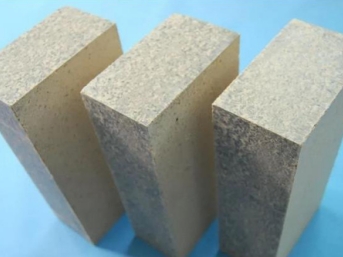- 18
- Mar
What is the melting point of refractory bricks?
What is the melting point of 耐火れんが?
耐火れんがは耐熱材料であり、主に煙突や窯などの高温作業に使用されます。 ただし、耐火レンガにも融点があります。 耐火レンガの材質は異なります。 あなた自身の仕事の用途に応じて耐火レンガの種類を選択してください。
耐火粘土または他の耐火材料で作られた耐火物。 主に製錬炉の建設に使用され、1,580℃〜1,770℃の高温に耐えることができます。
粘土レンガは弱酸性の耐火材料です。 工業炉で使用される粘土レンガの耐火性が1600°Cを超えると、負荷軟化の開始温度はわずか1250〜1300°Cになります。 Yiran工業炉で使用される粘土レンガは、原材料が非常に豊富で、製造技術が比較的単純で、コストが比較的低くなっています。 それらは、さまざまなYiran加熱炉、およびYiran熱処理炉の煙道、煙突、および煙突の建設に広く使用されています。 炉体、排熱設備、燃焼システムバーナー等。

Magnesia brick is a refractory material with MgO content above 80-85% and periclase as the primary mineral deposit. The melting point of MgO is as high as 2800℃. The refractoriness of magnesia brick is above 2000℃, but its softening point under load is very low, as long as 1500-1550℃. This is because the surrounding periclase crystals are bonded by low-melting forsterite (CaO·MgO·SiO2) and glass, while periclase does not form a continuous crystalline network, the load deformation temperature is very low, and the beginning The temperature range from softening to 40% deformation is very small, as long as 30-50℃. The thermal stability of magnesia bricks is also poor, and it simply cracks during rapid cooling and heating, which is an important factor in the damage of magnesia bricks.
一般的なコランダムれんがは、重油ガス化炉の火面を3MPa以下の使用圧力でライニングするのに適しています。これは、塩性廃水焼却炉のライニングの重要な部分であり、高温で機能する放射バーナーれんがです。 一般的に、コランダムれんがの使用温度は摂氏1600〜1670度未満です。 軽量耐火粘土レンガは、高温スラグや腐食性ガスによって腐食されない窯のライニングとして使用されます。 容量にもよりますが、動作温度は摂氏1150〜1400度です。
上記は、さまざまなタイプに応じた耐火レンガのさまざまな融点の要約です。 耐火レンガを選ぶときは、融点に応じて適切なレンガを選ぶこともできます。
